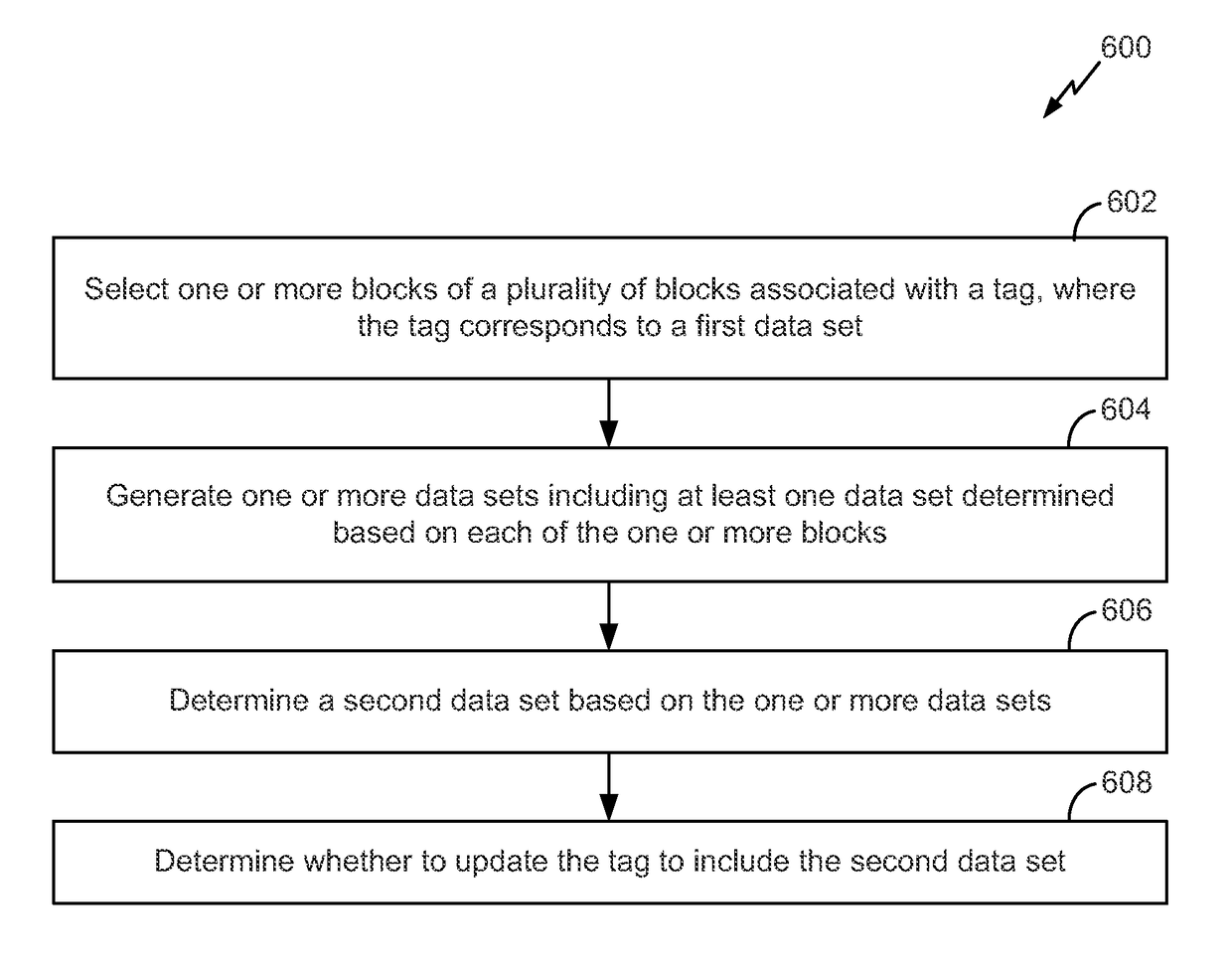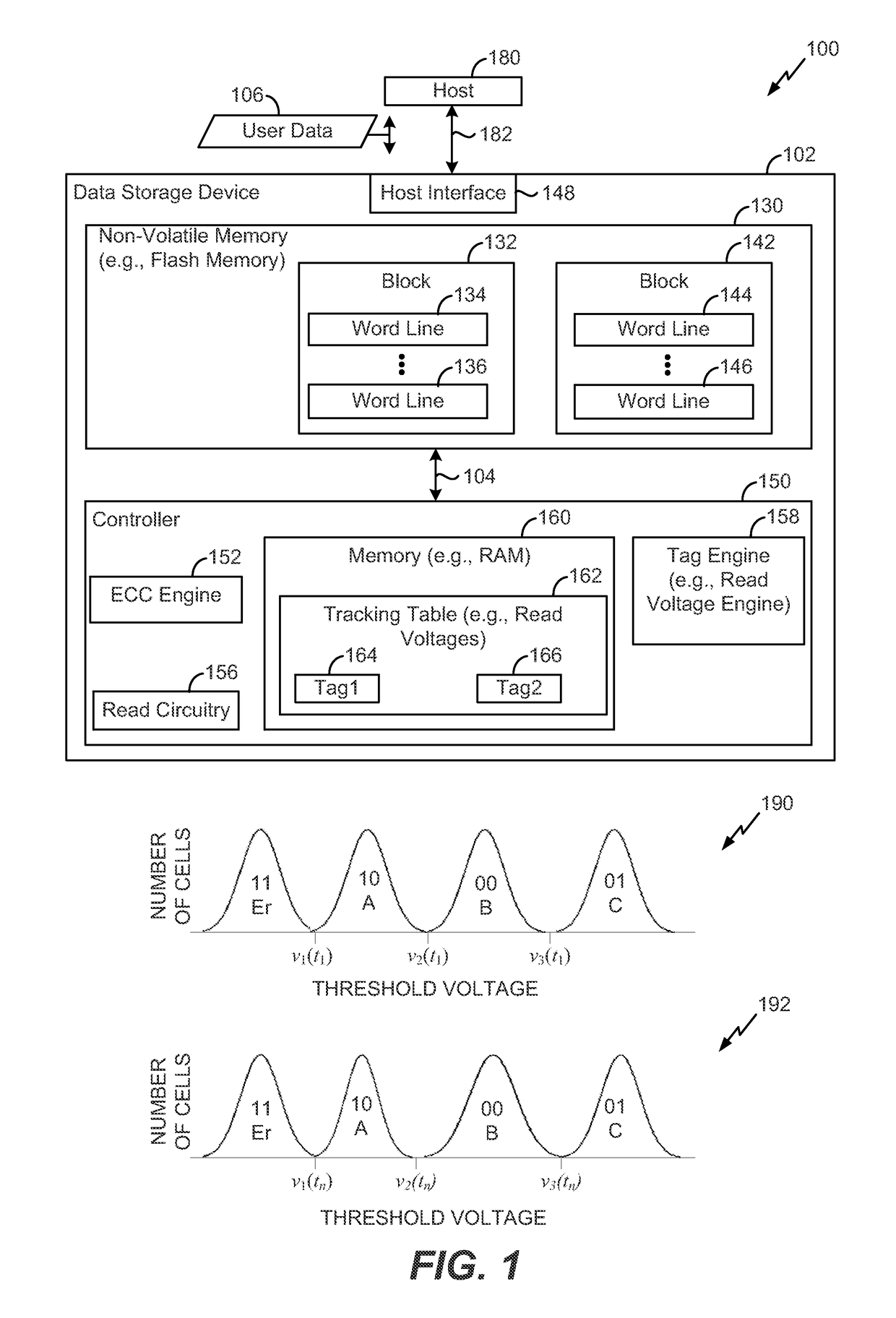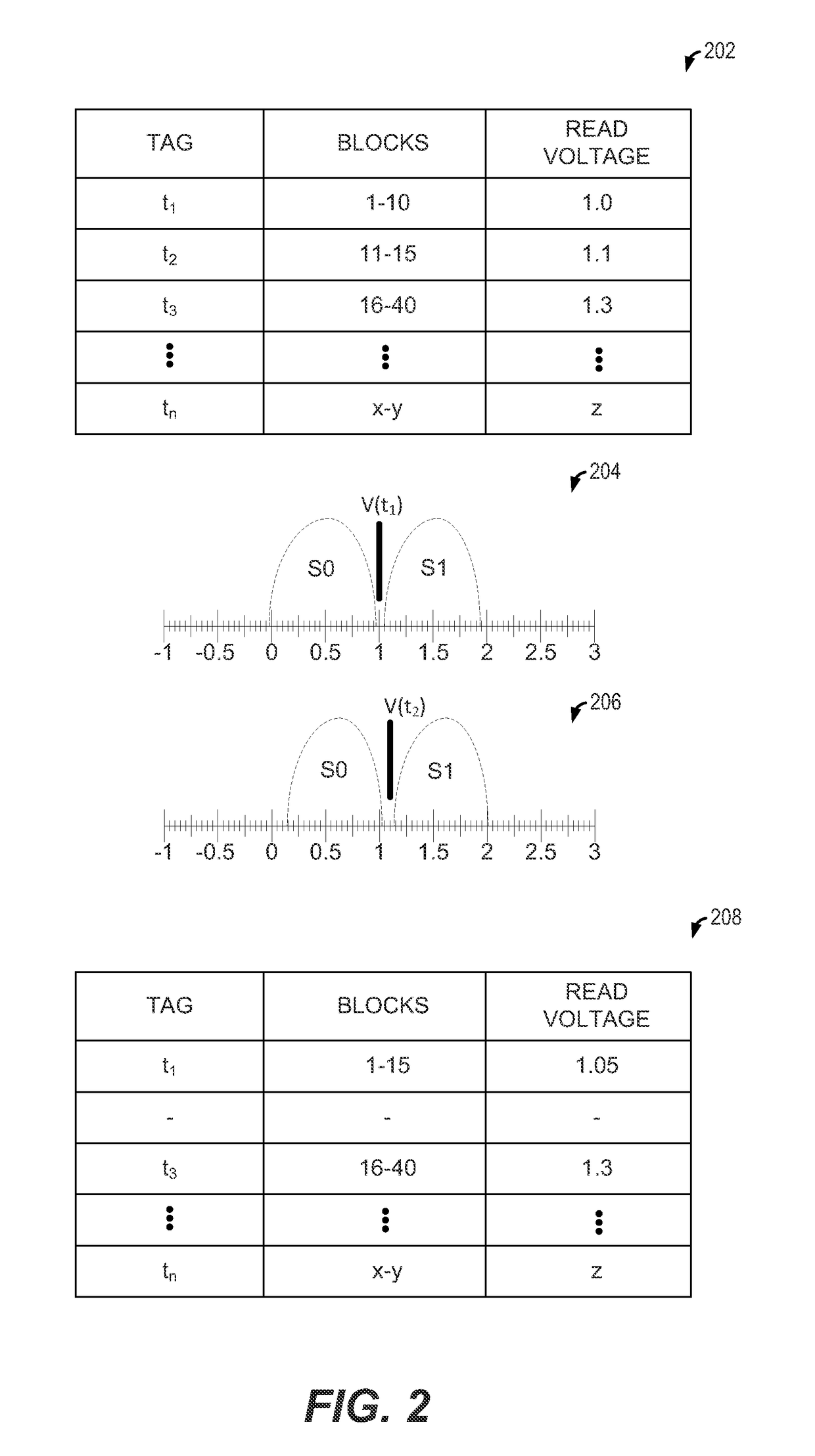System and method of managing tags associated with read voltages
a technology of read voltage and management method, applied in the direction of memory address/allocation/relocation, fault response, instruments, etc., can solve the problems of large bit error rate, failure or difficulty of the new set of read voltage, and degradation of the system performance of the non-volatile data storage device. achieve the effect of improving and improving efficiency
- Summary
- Abstract
- Description
- Claims
- Application Information
AI Technical Summary
Benefits of technology
Problems solved by technology
Method used
Image
Examples
Embodiment Construction
[0018]Particular embodiments of the present disclosure are described below with reference to the drawings. In the description, common features are designated by common reference numbers throughout the drawings.
[0019]FIG. 1 is a block diagram of a particular illustrative embodiment of an electronic device 100 including a data storage device 102 and a host device 180. The data storage device 102 may be coupled to the host device 180 via a communication path 182, such as a wired communication path and / or a wireless communication path. The data storage device 102 may be embedded within the host device 180, such as in accordance with an embedded MultiMedia Card (eMMC®) (trademark of Joint Electron Devices Engineering Council (JEDEC) Solid State Technology Association, Arlington, Va.) configuration. Alternatively, the data storage device 102 may be removable from (i.e., “removably” coupled to) the host device 180. For example, the data storage device 102 may be removably coupled to the ho...
PUM
 Login to View More
Login to View More Abstract
Description
Claims
Application Information
 Login to View More
Login to View More - R&D
- Intellectual Property
- Life Sciences
- Materials
- Tech Scout
- Unparalleled Data Quality
- Higher Quality Content
- 60% Fewer Hallucinations
Browse by: Latest US Patents, China's latest patents, Technical Efficacy Thesaurus, Application Domain, Technology Topic, Popular Technical Reports.
© 2025 PatSnap. All rights reserved.Legal|Privacy policy|Modern Slavery Act Transparency Statement|Sitemap|About US| Contact US: help@patsnap.com



